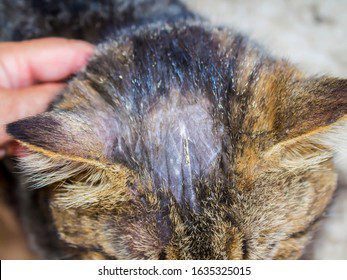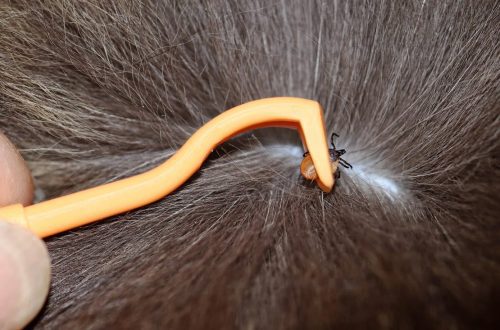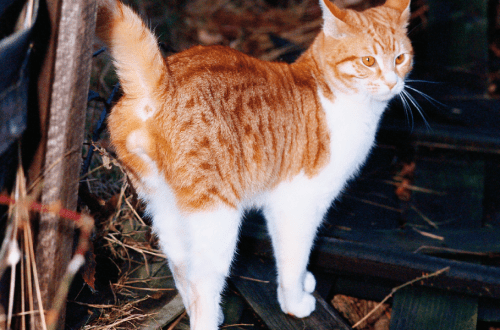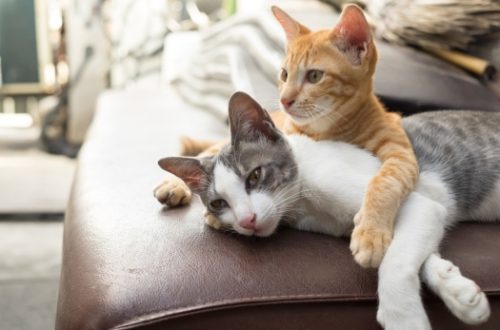
Lichen na nwamba: mgbaàmà, ọgwụgwọ na mgbochi
If your cat’s fluid movements have given way to fussy scratching, lichen may be to blame. How to cure it and prevent recurrence? Let’s figure it out together with Hill’s veterinarians.
Eme
Ringworm is a skin infection caused by a variety of fungi. Most often, cats become infected from each other: spores are transmitted through the scales of the epidermis and hair.
However, the presence of a fungus on the cat’s fur does not mean a disease. If the cat is healthy, its microflora will independently cope with pathogenic organisms. But with a decrease in immunity, the balance of microflora is disturbed, fungi begin to actively multiply, and the cat develops lichen.
Factors that provoke the appearance of infection:
Immunocompromised cats. As well as kittens up to 1 year old, pregnant cats; cats infected with infectious diseases and parasites. Exhaustion and constant stress can also be the cause of weakened immunity and, as a result, infection is deprived
Ọnọdụ njide na-ekwesịghị ekwesị. Lichen in a domestic cat can develop against the background of malnutrition or non-compliance with hygiene rules. This item also includes the neglect of planned visits to the veterinarian.
Mkpụrụ ndụ ihe nketa pụrụ ịkọ. Cat breeds that have been artificially bred do not have innate immunity to the disease. Pets with sensitive skin will also find it difficult to resist fungal colonies.
Self-walking cat. Contact with outdoor animals – cats, dogs, rodents – will almost certainly lead to infection with pathogenic fungi. Assess all risks before sending your cat free range.
Ụdị na mgbaàmà.
Many cat owners have no idea what lichen looks like and mistake any redness or baldness for it. In fact, all types of this disease have characteristic signs.
Ringworm in cats. The diagnosis with this type of lichen is usually called trichophytosis or microsporia of cats. This is the most common type of disease among animals, in which the hair seems to be cut off with invisible scissors – most often irrevocably.
However, you have the opportunity not to bring the cat to such a state. In the first stages of the disease, only a small rash appears, and the pet begins to itch actively. If you do not go to a veterinarian, the rash will turn into scaly patches, and then into extensive foci of baldness.
Ringworm is a zoonotic disease, that is, a disease that can be transmitted from cats to humans (and vice versa). Children, the elderly and those with weakened immune systems are especially sensitive to it.
Pink na-anapụ. It appears as numerous pink spots that peel off in the center and remain smooth at the edges. This type of lichen is viral and often resolves on its own.
But this is not a reason to neglect a visit to the veterinarian. This type of lichen can be in a cat with an unbalanced diet, as well as due to constant stress.
Pityriasis rosea gives the green light to associated infections, and pathogens that enter the affected areas can cause inflammation. Keep your pet calm and well-nourished, but don’t bathe until the spots are gone.
Pityriasis versicolor. This type of lichen is characterized by the appearance on the body of a cat of a pigment spot from yellow to brown, the spots can merge, forming larger areas, the cause of its occurrence is also a fungus. This type of lichen is dangerous to humans. If the fungus has got not only on the skin, but also in the structure of the claws, they are deformed. With this type of lichen, itching is practically absent, and the cat will not be able to point out the problem to you by actively scratching.
Wetting lichen. Also known as eczema. It can be caused by internal problems in the cat’s body (stress or hormonal failure), as well as external factors that provoke allergies, such as a new detergent. The disease begins with small red spots, in place of which bubbles with liquid later form.
This type of lichen is not contagious, but the pet should be shown to the veterinarian. If the eczema is left untreated, burst blisters can lead to infection and pustules.
Nchoputa na ọgwụgwọ
An external examination of the pet is not enough to make a diagnosis. Even a specialist cannot always distinguish lichen from dermatitis or alopecia without the following methods:
Ultraviolet diagnostics.
Microscopy of affected hair.
Sowing Wednesday.
If the ultraviolet lamp shows a characteristic green glow, spores of the fungus are detected during microscopy, and sowing on the medium diagnoses a specific pathogen – lichen is diagnosed. In cats, the treatment of this disease is carried out in several directions:
Taking antifungal drugs.
Treatment of affected areas.
Immunity restoration (balanced nutrition that will provide the cat with the necessary nutrients).
After the course of treatment, it is necessary to retake the crop. The cat is declared healthy after two negative culture results with an interval of 1 month.
Home treatment for lichen in cats is possible only after visiting a veterinarian. Self-administration of drugs can cause overdose or side effects.
Prevention
For owner
In order not to get infected from a cat, exclude its contact with household items: bed linen, towels, clothes. Every day, vacuum the room where the sick animal is located and do a wet cleaning – this will help remove infected spores and hairs. And for surface treatment, use solutions with antifungal action.
Maka anụ ụlọ
The most reliable ways to prevent lichen are to maintain the pet’s immunity with a complete and balanced diet, compliance with maintenance standards and a comfortable home environment. There is also a vaccination against lichen. Administering the vaccine twice, 10 to 14 days apart, will provide protection against fungi for the next 12 months. Even if infection does occur, the disease will proceed in a mild form. Timely visits to the veterinarian will also serve as a preventive measure against infection.
Take care of yourself and your pets!





